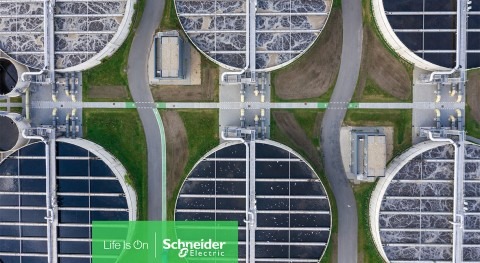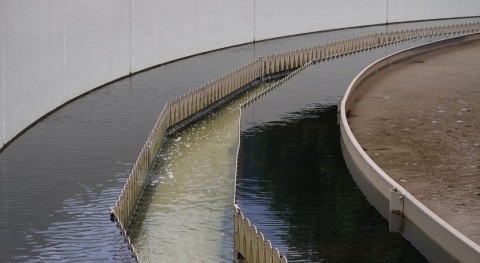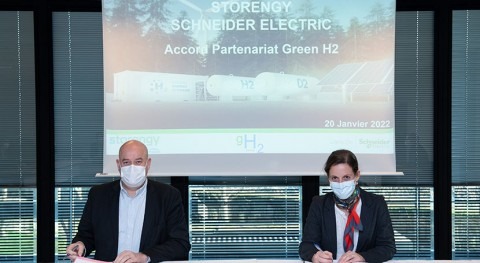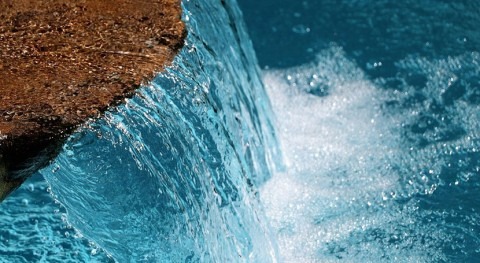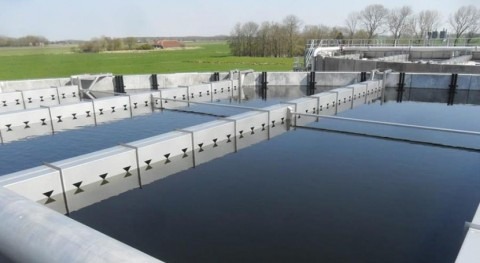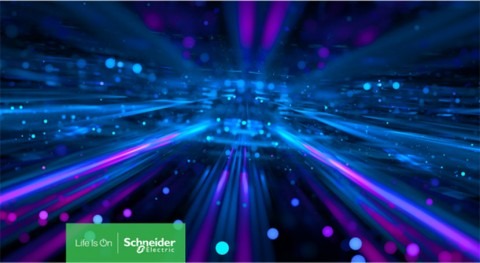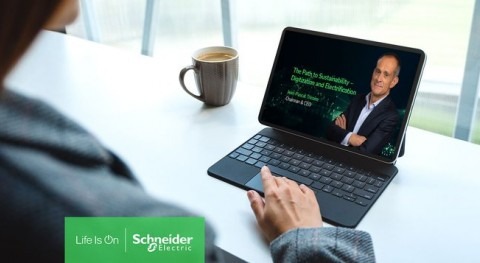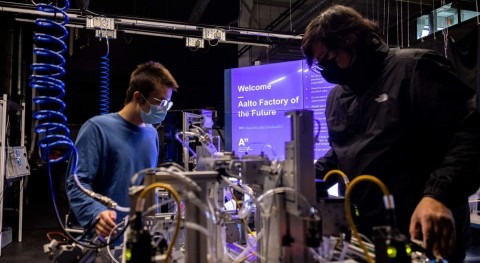As part of our interviews on digitalization in the water industry, we interview Nicolas Foret, Global Solution Architect and Water Competency Center Director at Schneider Electric, to get a better understanding of how water utilities can manage the risk of cyber attacks on water infrastructure systems, the latest digital solutions including in mobility, cloud, pervasive sensing and analytics and the future of smart water technology.
Nicolas Foret joined the French-based company over ten years ago and whose activities currently includes value proposition creation from Voice of Customer, design of reference architectures and coordination with the company's activities to support the roadmap, co-innovation with start-ups and internal teams, support on major sales pursuit, and leadership of a community of local water solution architects in the countries.
Nicolas initially joined Schneider Electric as electrical and automation engineer and gained 10-year experience as project manager on international turnkey projects, within industrial application domains, including harbour crane hoisting systems, automotive and steel Industry.
He then became automation team leader, delivering automation services in the industrial sector within the European market, including automation system conversions, applicative software development, and technical consultancy.
Later, more specifically for the French market, he managed co-development projects for automation systems with machine builders (OEMs), bringing innovation, standardization, and industrialization, generating recurring business through sales of repetitive solutions.
Question: What do you think are the biggest challenges facing the water sector today?
Answer: Let’s look at the challenges faced by industrial and municipalities, behind the megatrends of water scarcity, stronger water demand and climate changes that directly impact water management: from what we see through our worldwide presence in water, the biggest challenges are the aging infrastructure, more stringent water quality standards, lower capital available to invest in infrastructure, rising operating costs, and the lack of resilience of water and wastewater infrastructure.
Operating costs encompass multiple aspects like energy and chemical costs, workforce efficiency, asset performance, and smart operations. So there is a lot to do here!
Resilience is crucial. Improving resilience of water or wastewater infrastructure is the best method to minimize risks, so that all facilities and procedures can recover quickly from abnormal and unpredicted events. Those events have different origins, like weather conditions, decaying infrastructure and assets, accidental pollution, malicious acts.
Resilience is crucial. Improving resilience of water or wastewater infrastructure is the best method to minimize risks
Q: How do you think new technologies, including cloud-based software, can contribute to facing these challenges?
A: First, the new technologies we are talking about here are the ones enabling digital transformation, that means: mobility – which makes communication pervasive –, cloud – which allows to aggregation of sharing of data –, pervasive sensing – which adds huge capability of getting additional data at lower cost, and analytics – extracting value from this big data, enabling optimizations and more informed decisions.
People, operations and energy are all impacted by these new technologies, which bring:
- Capabilities of empowering workers with augmented and virtual reality, reducing staff by automating water installations, and enhancing safety at water facilities.
- Hardware agnostic data management apps and analytics for optimizing operations, reducing leakage, optimizing flow and pressure, reducing energy consumption and turning treatment plants into carbon neutral facilities
- Ability to predict failures in critical assets, alongside with ability to allow real-time decision making by aligning IT and OT.

Q: How does a company like Schneider Electric contribute to smart water management?
A: We contribute to smart water management by developing and delivering solutions and services, with the goal to help our customers to make water safe, reliable, sustainable and efficient across the entire water cycle.
Our approach to deliver this potential is based on an IoT strategy that focuses on different key personas in a water utility: empowered operators, proactive maintenance teams, and agile management for C-levels.
“Empowered operators” is about getting the right information to the operator - on the field or at a control centre - in a way they can easily interact with it and make better decisions.
- For mobile operators on widespread infrastructure, we provide AVEVA Insight, as a cloud platform for collecting, storing, and visualizing data across the enterprise, enabling smarter and faster business decisions.
- For field operators, we provide EcoStruxure Augmented Operator Advisor, based on augmented reality technology. It allows downtime reduction, faster execution of operations and maintenance tasks, and operator errors reduction.
- For water network operators, we provide Water Network Management software to help them improve service and reduce operating costs, leveraging a real time, online network modelling with capability to forecast network behaviour, manage water age and pollutant dispersion, optimize pressure, detect leaks. We see it as digital twin of a water network.
“Proactive maintenance teams”, is about optimizing the management of different types of assets in the water infrastructure, leveraging sensors and analytics to give the ability for true predictive, or condition-based maintenance. In this domain, we are delivering digital services – backed by Schneider Electric experts - leveraging key data from plants or networks and translating them into actionable insights. I would like to mention our dedicated offers for:
- Predictive maintenance of critical electrical assets: EcoStruxure Asset Advisor
- Pumping installation performance: EcoStruxure Pumping Performance Advisor
- Plant electrical network and power management system diagnostics: EcoStruxure Power Advisor
Those are “managed services” offers, including support from remote Schneider Electric experts, providing reports and recommendations.
“Agile management for C-level” is about combining the OT with IT to allow smarter business decisions. This involves improvements in productivity, in key processes performance, regulation compliance, reduction of investment and business optimization. To illustrate that, I want to mention:
- Our Water Loss Management platform, which provides leakage calculation, active leakage control support, KPIs dashboards and reports, in line with IWA best practises, serving large water utilities distributing water.
- Our EcoStruxure Resource Advisor, a cloud-based enterprise-level supply, sustainability and demand platform which allows users to see, measure and manage critical energy and sustainability data across a utility
Our intelligent water management solutions are implemented in water and wastewater treatment plants, desalination plants, water networks and utility-wide infrastructures. To illustrate the great diversity of geographical areas in which we deploy these solutions, I would like to mention that some of our most recent successes are in the United States, Mexico, Colombia, Chile, Belgium, Italy, Denmark, Saudi Arabia and New Zealand...
Q: How does data-driven water technology help combat the growing global water crisis?
A: The World Water Vision Report stated that "There is a water crisis today. But the crisis is not about having too little water to satisfy our needs. It is a crisis of managing water so badly that billions of people - and the environment - suffer badly."
Technology is not the only lever that will help to change the situation. We know it is also a question of political decisions, financing, resolution of transboundary conflicts, raising awareness on sustainable use and management of water resources, people and community empowerment. But data-driven technology may contribute to improvement on both supply side and demand side of the water ecosystem.
But data-driven technology may contribute to improvement on both supply side and demand side of the water ecosystem
On water supply side, water resources monitoring and water loss reduction solutions in water distribution bring benefits like low cost and autonomous sensors, data collection and analytics running on the cloud.
On the water demand side, multiple approaches are developing, with the intent to optimize water use:
- Irrigation systems can benefit from solutions that take into account weather forecast, soil moisture, and constraints on water sources that accurately control irrigation systems. Farmers can get full supervision and control of their irrigation systems through mobile devices.
- In industrial installations, water efficiency is a growing trend. We see some start-ups working on that topic, focusing on industrial and environmental performance of water uses and treatments.
- On water domestic use, there is a lot to do as well. For instance, digital technologies can help change consumer behaviour. To illustrate, I have in mind a French start-up who is commercializing a connected shower, that you can easily pair with your phone to follow up your consumption and monitor your water savings. It includes all the ingredients of success: easy to install, no battery (energy harvesting from water flow), playful (shower lights up according to your consumption), addictive.
Q: What sectors adopt digital water technologies more rapidly. And why?
A: Water distribution networks are part of the early adopters of digital water technologies, probably because there is a lot to win in this sector: widespread, underlaying infrastructure where people have traditionally less control about what is happening, with big potential savings brought by leak detection / water loss management, and pressure optimization.
Critical asset management is also a key area where digital technologies adoption is growing fast, for both plants and networks. Those assets are from different types (static, mechanical, electrical, control). They can be smart (with embedded intelligence and auto-diagnostic capabilities) or not (requiring addition of sensors). There is a big interest to connect them to the cloud and apply analytics that allow to assess their health and predict failures. Pumps, decanters, RO membranes, large transformers, Medium voltage switchgear, variable speed drives are just examples.
Water distribution networks are part of the early adopters of digital water technologies
.jpg)
Q: These digital solutions, however, can be vulnerable to malice. What is your opinion on cybersecurity for water utilities?
A: Like in other sectors, digital solutions in water promise greater business value through increased connectivity and data analytics. But greater connectivity can increase vulnerabilities if not managed. Also, attackers are leveraging more sophisticated means. To take only the consumer viewpoint, availability and quality of water delivery may be compromised, and sanitary problems and environmental impact may occur, following malicious acts on water and wastewater digital systems.
A digital solution provider needs to secure his solutions by providing end-to-end cybersecurity. When working with water utilities, interaction or integration between the digital solution provided and the utility existing systems is necessary. The cyber-security aspects shall always be treated with particular attention, on each customer project.
Digital solutions, depending on their scope, shall be designed to be non-intrusive, as much as possible, particularly when interaction with existing an customer system is limited to data collection. In this case, read-only access is implemented from PLCs, historians, smart devices, sensors, … Also, 3G/4G communication to the solution provider cloud is favoured, simplifying access compared to going through customer IT, even if the latter is a valid alternative as well.
Digital solutions in water promise greater business value through increased connectivity and data analytics
Schneider Electric selected the IEC 62443 as its core cybersecurity standard at edge control system and product level, and ISO/IEC 27017 for its cloud offer, at Apps, analytics, and infrastructure level (this standard includes people, process and IT systems). We integrate cybersecurity in our offer development, by deploying internally a Secure Development Lifecycle, with trained developers and IEC 62443 certified R&D hubs.
Our cybersecurity technical strategy includes partnership with major cybersecurity actors, security by design and defense-in-depth approach. It also includes supply of cybersecurity services with certified service experts who deliver audit/assessments, consulting, design/implementation, and trainings.
Q: What do you think is the future of smart water technology?
A: I think smart water technology will keep gaining traction in the areas of smart operations, asset performance, workforce empowerment, energy efficiency and smart design & engineering.
The future of smart water technology relies on an enlarged ecosystem of players collaborating and bringing their own contribution and values. It is difficult to imagine a single company developing and deploying an end-to-end solution covering all water utility needs. Co-innovation between technology players is also a way to enrich solutions.
Besides large companies, innovative start-ups play an important role in that story, combining use of advanced technology such as machine learning and artificial intelligence, with expertise of a particular domain like water or wastewater treatment processes, or electro-mechanical assets, for instance. Qualified system integrators will also play an important role in the integration and a connection of a solution in the water utility system.
More on the technical side, I see three points of attention, for the near future:
- Smart water applications need data, generally from different sources. But water companies may suffer from a lack of reliable data with which may marginalize the benefits of those smart applications. Ensuring data quality is key to enable digital transformation and is a growing requirement.
- Smart water technology will go on leveraging various IOT communication networks that are developing today, like LPWAN (LoRa, SigFox...) NB-IOT, LTE-M, future 5G, even if we see a battle in this field, that may lead to winners and losers, or at least different geographical zones of influence. An important point is that analytics that run in the cloud remain agnostic relating to this communication infrastructure.
- All those systems shall provide necessary openness, but also embed cybersecurity, which sometimes they lack. Cybersecurity will remain a must in all smart water solutions.







